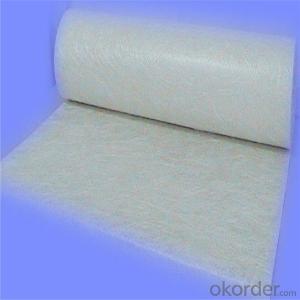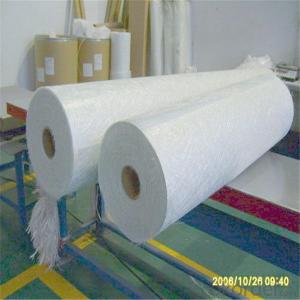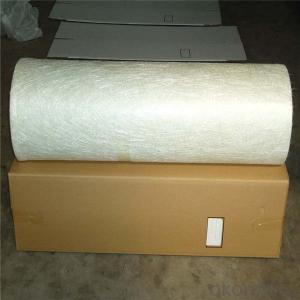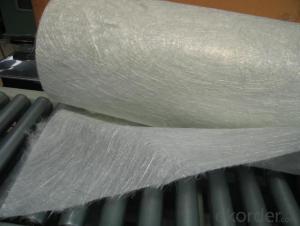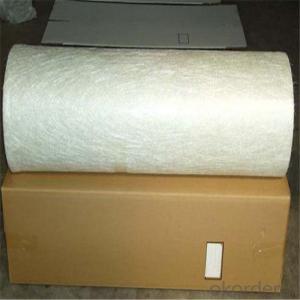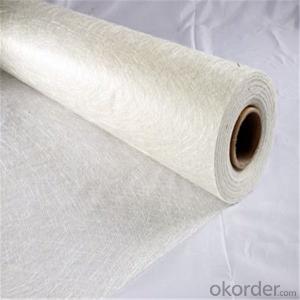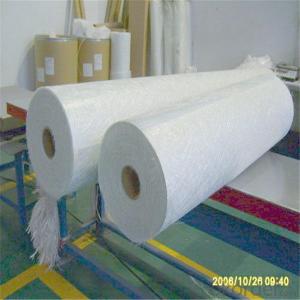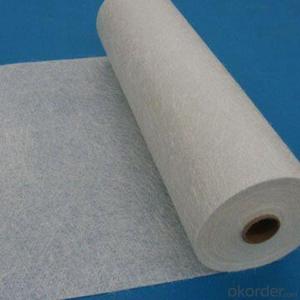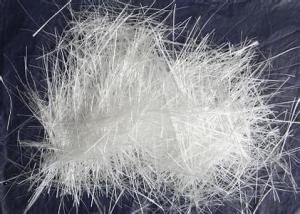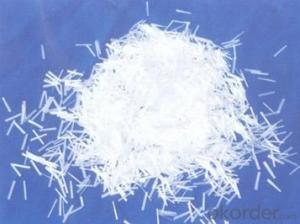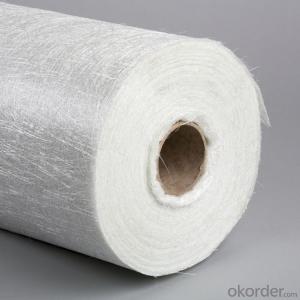2015 E-GLASS Powder Chopped Stand Mats
- Loading Port:
- Tianjin
- Payment Terms:
- TT OR LC
- Min Order Qty:
- 100 m.t.
- Supply Capability:
- 20000 m.t./month
OKorder Service Pledge
Quality Product, Order Online Tracking, Timely Delivery
OKorder Financial Service
Credit Rating, Credit Services, Credit Purchasing
You Might Also Like
Quick Details
| Technique: | Chopped Strand Fiberglass Mat (CSM) | Dimensions: | 450gsm | Mat Type: | Continuous Filament Mat |
| Fiberglass Type: | E-Glass | Softness: | softness | Place of Origin: | Jiangxi, China (Mainland) |
| Brand Name: | cnbm | Model Number: | 450gsm | color: | white |
| fiberglass type: | E glass | product: | e-glass powder chopped stand mats | binder: | powder or emulsion |
| width: | 1040 or 1270mm, as your requirement | weight: | 30 or 45kg/roll | paper tube diameter: | 90mm |
| outer diameter of roll: | 256mm | packing: | plastic film+carton box + pallet |
Packaging & Delivery
| Packaging Details: | plastic film+carton box + pallet |
| Delivery Detail: | 15-20days |
Specifications
1.e-glass powder chopped stand mats
2.binder:power or emulsion
3.width:1040mm or 1270mm
4.weight:450gsm
Picture
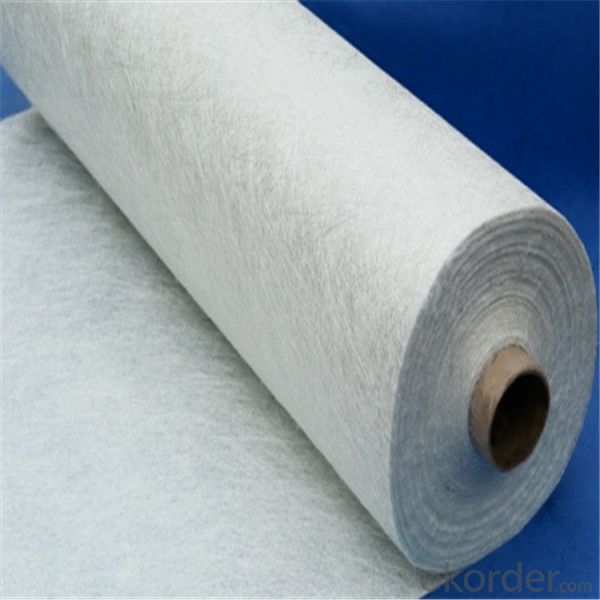
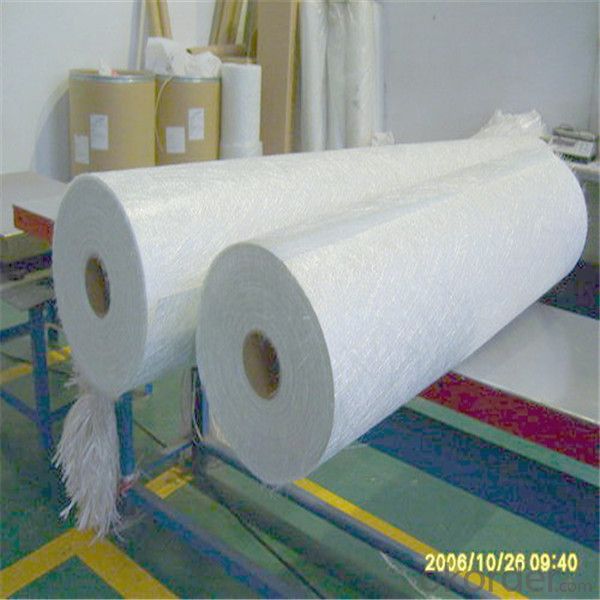
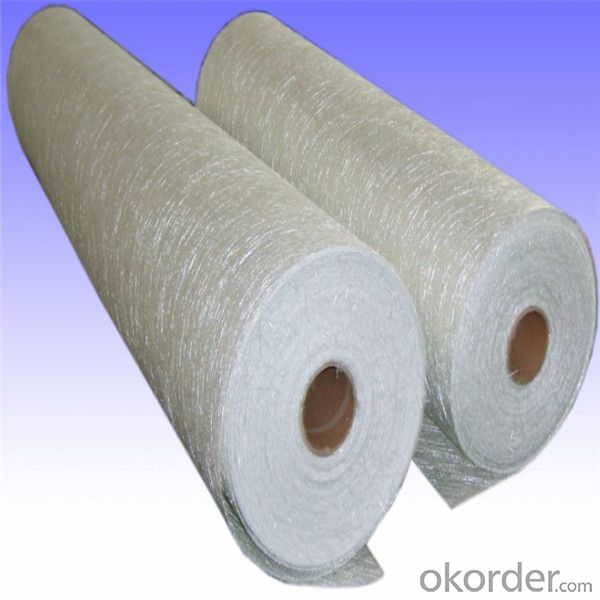
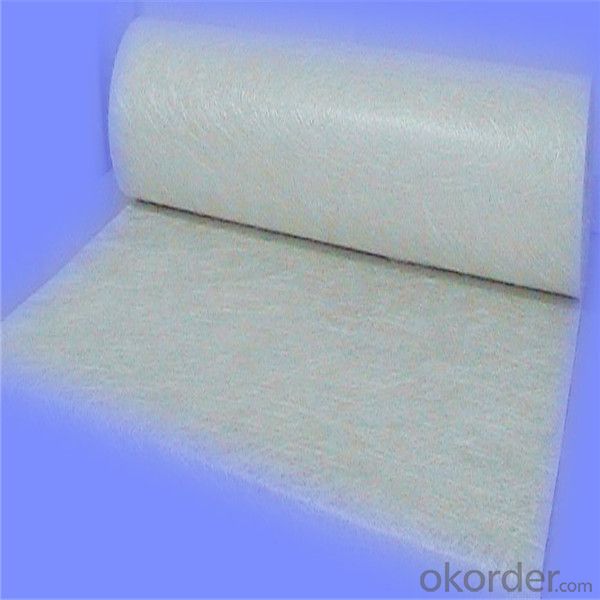
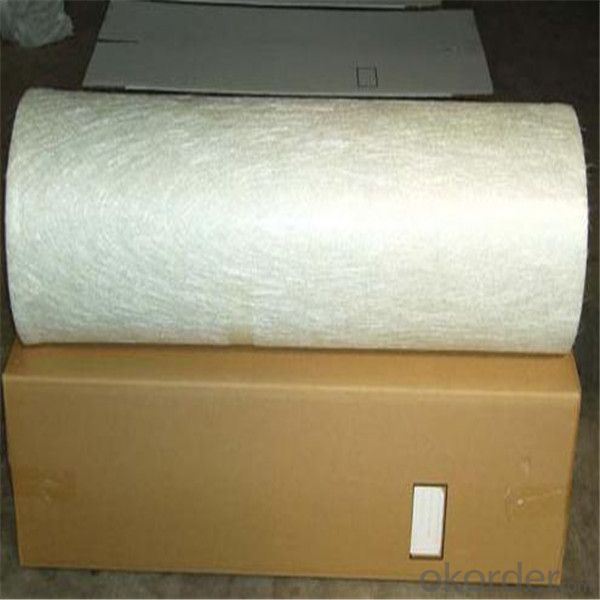
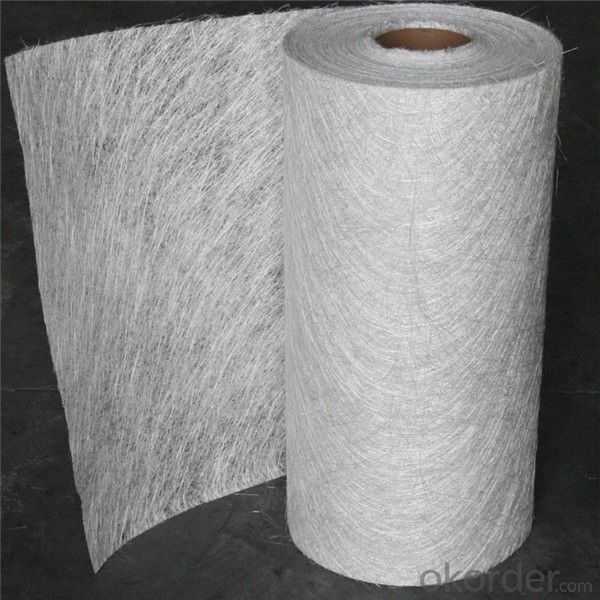
- Q:How does the fiber dispersion affect the properties of fiberglass chopped strand?
- Fiber dispersion refers to the distribution and alignment of individual fiberglass strands within a chopped strand. It plays a crucial role in determining the properties of fiberglass chopped strand. Proper fiber dispersion ensures uniform reinforcement throughout the composite material, resulting in enhanced strength, stiffness, and impact resistance. It also promotes better resin impregnation, leading to improved adhesion between the fibers and the matrix. In contrast, poor fiber dispersion can result in weak spots, reduced mechanical properties, and potential delamination issues in the finished fiberglass product.
- Q:Can fiberglass chopped strand be used in the production of consumer goods?
- Yes, fiberglass chopped strand can be used in the production of consumer goods. It is commonly utilized in various industries such as automotive, construction, and marine for manufacturing products like pipes, tanks, boats, and vehicle parts. The lightweight and durable nature of fiberglass make it suitable for consumer goods production, providing strength and resistance to corrosion.
- Q:How does the viscosity of the resin affect the impregnation of chopped strand?
- The viscosity of the resin plays a crucial role in the impregnation of chopped strand. Viscosity refers to the thickness or resistance to flow of a liquid, and in the case of resin, it determines how easily it can penetrate and saturate the chopped strand. Higher viscosity resin tends to be thicker and more resistant to flow. When impregnating chopped strand, this can result in difficulties in the resin fully penetrating and saturating the fibers. The thick resin may struggle to flow through the gaps between the strands, leading to incomplete impregnation and potential voids in the final composite product. On the other hand, lower viscosity resin flows more easily and can penetrate the chopped strand more effectively. It can fill the gaps between the fibers, ensuring complete impregnation and minimizing the presence of voids. This results in a stronger and more uniform composite material. Therefore, it is important to carefully consider the viscosity of the resin used in the impregnation process. The appropriate viscosity will depend on the specific requirements of the application. A resin with lower viscosity may be preferred for processes where complete impregnation is crucial, while higher viscosity resin may be suitable for applications where some degree of fiber visibility or controlled resin flow is desired. Ultimately, the viscosity of the resin directly affects the impregnation process and impacts the overall quality and performance of the composite material.
- Q:How does the abrasion resistance of fiberglass chopped strand compare to other reinforcing materials?
- Fiberglass chopped strand is widely recognized for its exceptional abrasion resistance, surpassing many other reinforcing materials. Its remarkable strength-to-weight ratio and long-lasting durability make it an ideal selection for applications that require resistance against wear and tear. When compared to alternatives like steel, aluminum, or carbon fiber, fiberglass chopped strand demonstrates outstanding resistance to abrasion. This can be attributed to its unique composition, which consists of delicate glass fibers embedded in a polymer matrix. These glass fibers effectively reinforce the material and enhance its ability to withstand abrasive forces. Furthermore, fiberglass chopped strand can be further fortified with various coatings or treatments to enhance its abrasion resistance. For instance, the application of a resin coating can provide an additional layer of safeguard against abrasion, extending the material's lifespan and enhancing its performance in demanding scenarios. In terms of cost-effectiveness, fiberglass chopped strand presents a compelling solution that does not compromise on performance. Its superior resistance to abrasion, coupled with its lightweight nature, positions it as the preferred choice in industries such as automotive, construction, marine, and aerospace, where durability and reliability are of utmost importance. In summary, fiberglass chopped strand's abrasion resistance is highly regarded when compared to other reinforcing materials, making it a versatile and dependable option for a wide array of applications.
- Q:How does the flame retardancy of the chopped strand affect its performance?
- The flame retardancy of a chopped strand significantly affects its performance by providing resistance to fire and preventing the spread of flames. This makes the chopped strand suitable for applications where fire safety is crucial, as it reduces the risk of ignition and helps inhibit the spread of fire.
- Q:Can fiberglass chopped strand be used in roofing materials?
- Indeed, roofing materials can incorporate fiberglass chopped strand. Fiberglass chopped strand, widely utilized in the production of roofing materials like shingles, tiles, and membranes, serves as a prevalent reinforcement material. Its exceptional strength and durability render it an optimal option for enduring severe weather and extending the lifespan of the roofing system. Typically, the chopped strands are blended with asphalt or resins and other materials to form a composite that amplifies the structural integrity and resistance of the roofing materials. Furthermore, fiberglass chopped strand boasts a lightweight nature, fire resistance, and commendable thermal insulation, further enhancing its appropriateness for roofing purposes.
- Q:How does the fiber content affect the thermal conductivity of fiberglass chopped strand composites?
- The fiber content in fiberglass chopped strand composites affects the thermal conductivity by increasing it. As the fiber content increases, the thermal conductivity of the composite also increases. This is because the fibers act as conductive pathways for heat transfer, allowing it to easily flow through the composite. Therefore, a higher fiber content leads to a higher thermal conductivity in fiberglass chopped strand composites.
- Q:How is fiberglass chopped strand used in the filtration industry?
- Fiberglass chopped strand is widely used in the filtration industry due to its excellent filtration properties and durability. It is commonly used to manufacture various types of filter media, such as filter bags, filter cartridges, and filter papers. The chopped strands of fiberglass are mixed with other materials, such as resins or binders, to create a robust and effective filtration material. The filtration industry values fiberglass chopped strand for its high filtration efficiency, as it can effectively capture and remove particles of various sizes from liquids or gases. One of the key advantages of using fiberglass chopped strand in filtration applications is its resistance to chemicals and high temperatures. This makes it suitable for filtering aggressive liquids or hot gases without compromising its performance. Additionally, fiberglass chopped strand is known for its excellent strength and dimensional stability, which ensures that the filter media can withstand the demanding operating conditions in the filtration industry. Furthermore, fiberglass chopped strand is easy to handle and process, allowing manufacturers to produce filter media in various shapes and sizes to meet specific filtration requirements. It can be easily molded, formed, or woven into different configurations to optimize filtration efficiency and flow rates. Overall, fiberglass chopped strand plays a vital role in the filtration industry by providing durable, efficient, and reliable filter media. Its unique properties make it an ideal choice for a wide range of filtration applications, including water treatment, air purification, oil and gas filtration, and industrial processes where particle removal is crucial.
- Q:How does the fiber-matrix adhesion of fiberglass chopped strand affect the performance of composites?
- The fiber-matrix adhesion of fiberglass chopped strand plays a crucial role in determining the overall performance of composites. The adhesion between the fibers and the matrix directly affects several important properties, including mechanical strength, durability, and resistance to various environmental factors. Firstly, a strong fiber-matrix adhesion enhances the mechanical strength of the composite material. When the matrix and the fibers have a good bond, it allows for the efficient transfer of stress from the matrix to the fibers, resulting in improved load-bearing capabilities. This adhesion prevents the fibers from slipping or pulling out of the matrix, thereby increasing the composite's resistance to deformation and enhancing its overall structural integrity. Additionally, a high fiber-matrix adhesion promotes better energy transfer between the fibers and the matrix, leading to enhanced impact resistance. This is particularly important in applications where the composite is subjected to dynamic loads or impacts, such as in automotive or aerospace industries. A strong adhesion between the fibers and the matrix allows the composite to absorb and dissipate energy more effectively, reducing the risk of failure or damage. Moreover, the fiber-matrix adhesion influences the durability of composites. A good adhesion can prevent moisture or other environmental factors from penetrating the interface between the fibers and the matrix, reducing the risk of delamination or degradation. This ensures that the composite retains its properties over an extended period, making it suitable for long-term applications. Furthermore, the fiber-matrix adhesion affects the composite's resistance to various chemicals and corrosion. A strong bond between the fibers and the matrix can prevent chemical substances from penetrating the interface and damaging the composite. This enables the material to withstand exposure to harsh chemicals, acids, or alkalis, making it suitable for applications in corrosive environments. In summary, the fiber-matrix adhesion of fiberglass chopped strand significantly impacts the performance of composites. A strong adhesion enhances the mechanical strength, impact resistance, durability, and resistance to chemicals and corrosion. Therefore, optimizing the fiber-matrix adhesion is crucial in order to maximize the performance and reliability of composite materials.
- Q:Can fiberglass chopped strand be used in the production of wind turbine towers?
- Yes, fiberglass chopped strand can be used in the production of wind turbine towers. It is commonly used as a reinforcement material in the manufacturing of composite structures, providing strength, durability, and corrosion resistance. The fiberglass chopped strand is typically mixed with a resin matrix to form composite panels or laminates, which are then used to construct the wind turbine towers.
1. Manufacturer Overview |
|
|---|---|
| Location | |
| Year Established | |
| Annual Output Value | |
| Main Markets | |
| Company Certifications | |
2. Manufacturer Certificates |
|
|---|---|
| a) Certification Name | |
| Range | |
| Reference | |
| Validity Period | |
3. Manufacturer Capability |
|
|---|---|
| a)Trade Capacity | |
| Nearest Port | |
| Export Percentage | |
| No.of Employees in Trade Department | |
| Language Spoken: | |
| b)Factory Information | |
| Factory Size: | |
| No. of Production Lines | |
| Contract Manufacturing | |
| Product Price Range | |
Send your message to us
2015 E-GLASS Powder Chopped Stand Mats
- Loading Port:
- Tianjin
- Payment Terms:
- TT OR LC
- Min Order Qty:
- 100 m.t.
- Supply Capability:
- 20000 m.t./month
OKorder Service Pledge
Quality Product, Order Online Tracking, Timely Delivery
OKorder Financial Service
Credit Rating, Credit Services, Credit Purchasing
Similar products
New products
Hot products
Hot Searches
Related keywords
